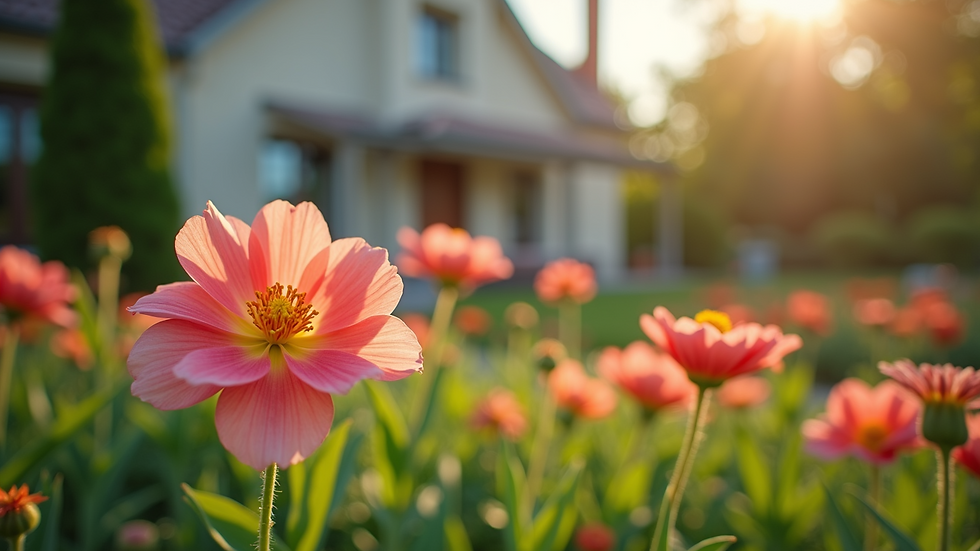Budget-Friendly Tips for Home Improvement Projects
- Luke Poe
- Jun 4
- 4 min read
Home improvement can seem daunting, especially when you're on a budget. However, with a little creativity and resourcefulness, you can achieve impressive results without breaking the bank. In this post, we’ll explore practical tips and strategies that will help you transform your living space affordably.
Affordable Home Improvement Ideas
There are many ways to enhance your home without spending a fortune. Here are some low-cost ideas to get you started:
Paint: A fresh coat of paint can do wonders for any room. Instead of painting all four walls, consider an accent wall to add depth and character to your space. Choose colors that complement your existing décor.
Upcycle Furniture: Instead of buying new furniture pieces, consider upcycling. Refurbishing old furniture with a bit of paint, stain, or new hardware can give you a new piece that fits your style.
DIY Decor: Instead of purchasing new decorations, try your hand at DIY projects. For instance, you could create wall art using materials you already have at home.
Landscaping: Simple landscaping improvements like adding flowers or shrubs can significantly boost your home’s curb appeal. Visit a local nursery to find affordable plants that thrive in your climate.

How to Budget for Home Improvement Projects
Creating a budget is an essential step in home improvement projects. Here’s how you can manage your finances effectively:
Determine Your Budget: Establish how much you can realistically spend on your project. Include materials, tools, and labor if you need a handyman service.
Prioritize Projects: List out all the projects you want to undertake and rank them based on importance. Focus on high-impact areas first, like kitchens and bathrooms, which can offer better returns if you plan to sell.
Plan Ahead: The more you plan, the more money you save. Research prices, materials, and possible labor costs before starting a project.
Stick to Your Budget: Once you have set a budget, try not to go over. Adjust your project scope instead, to stay within your planned expenses.

Smart Shopping Strategies for Home Renovation
Finding the best deals on materials is crucial for sticking to your budget. Here are some shopping tips:
Shop Sales and Discounts: Pay attention to seasonal sales at home improvement stores. Black Friday, Labor Day, and other holidays often offer substantial savings.
Use Coupons and Apps: Look for online coupons or download apps that provide discounts on home improvement purchases.
Consider Reclaimed Materials: Visit salvage yards for reclaimed wood, windows, and doors. These can be significantly cheaper and add character to your projects.
Bulk Purchases: If you're planning a large project, buying materials in bulk can save money. For example, buying paint by the gallon rather than by the quart often reduces costs.
Tips for Doing It Yourself
If you're feeling adventurous, many home improvement projects can be tackled on your own. Here are a few tips to make DIY easier:
Research: Online tutorials and videos can provide step-by-step instructions for many home projects. Browse platforms like YouTube for useful guides.
Start Small: If you’re new to DIY, start with small projects, like installing shelves or changing light fixtures, to build your confidence.
Gather Tools: Make sure you have the right tools before starting a project. Rather than buying new tools, consider borrowing from friends or renting them.
Ask for Help: Don’t hesitate to ask friends for assistance. Many people are happy to lend a hand for small projects.

Sustainable Home Improvement Practices
Incorporating sustainable practices in your home improvement projects can save money and benefit the environment. Here’s how to be eco-friendly while renovating:
Energy-efficient Appliances: When replacing appliances, look for energy-efficient models. They may be slightly more expensive upfront, but will lower your energy bills in the long run.
Use Eco-Friendly Materials: Choose sustainable materials like bamboo or reclaimed wood, which are not only environmentally friendly but can also add unique aesthetic charm.
Insulation: Improving your home’s insulation is a cost-effective way to reduce energy costs. Consider adding insulation in your attic or walls to keep your home warm in winter and cool in summer.
Water-saving Fixtures: Installing low-flow faucets and showerheads can reduce water usage significantly, which means lower water bills for you.
Incorporating these tips into your next home improvement project will not only help you save money but also contribute to a healthier planet.
Final Thoughts on Budget-Friendly Home Improvement
Home improvement doesn’t have to be an expensive endeavor. With careful planning, smart shopping, and a bit of DIY spirit, you can create a space you love without going over budget. Remember, it's all about prioritizing your projects, sticking to your budget, and exploring creative solutions.
As you embark on your home renovation journey, consider the power of well-planned creativity. Involved in various projects, don't hesitate to seek support when needed. If you prefer a professional touch, be sure to check out a handyman service for assistance. Happy renovating!







Comments